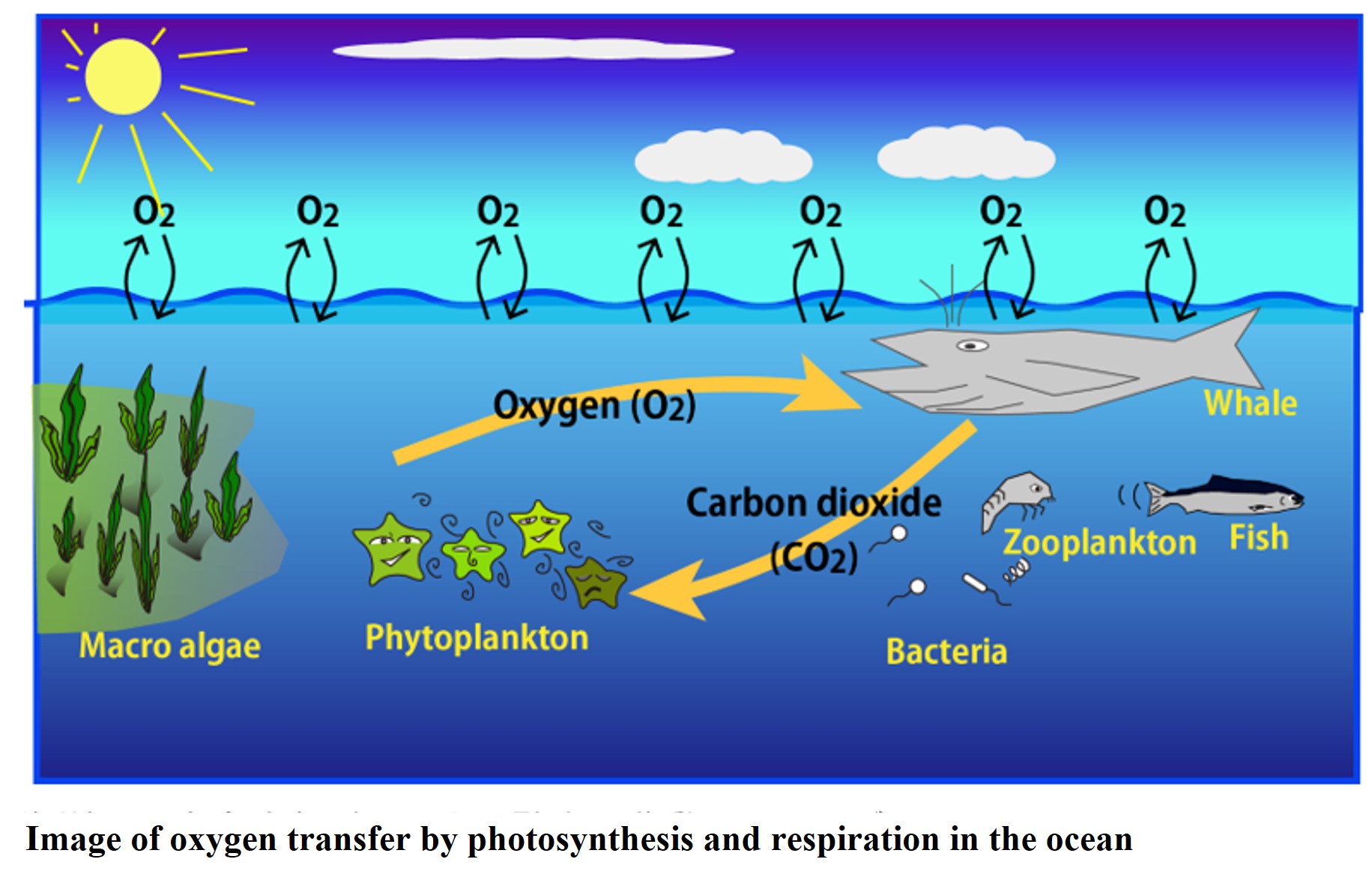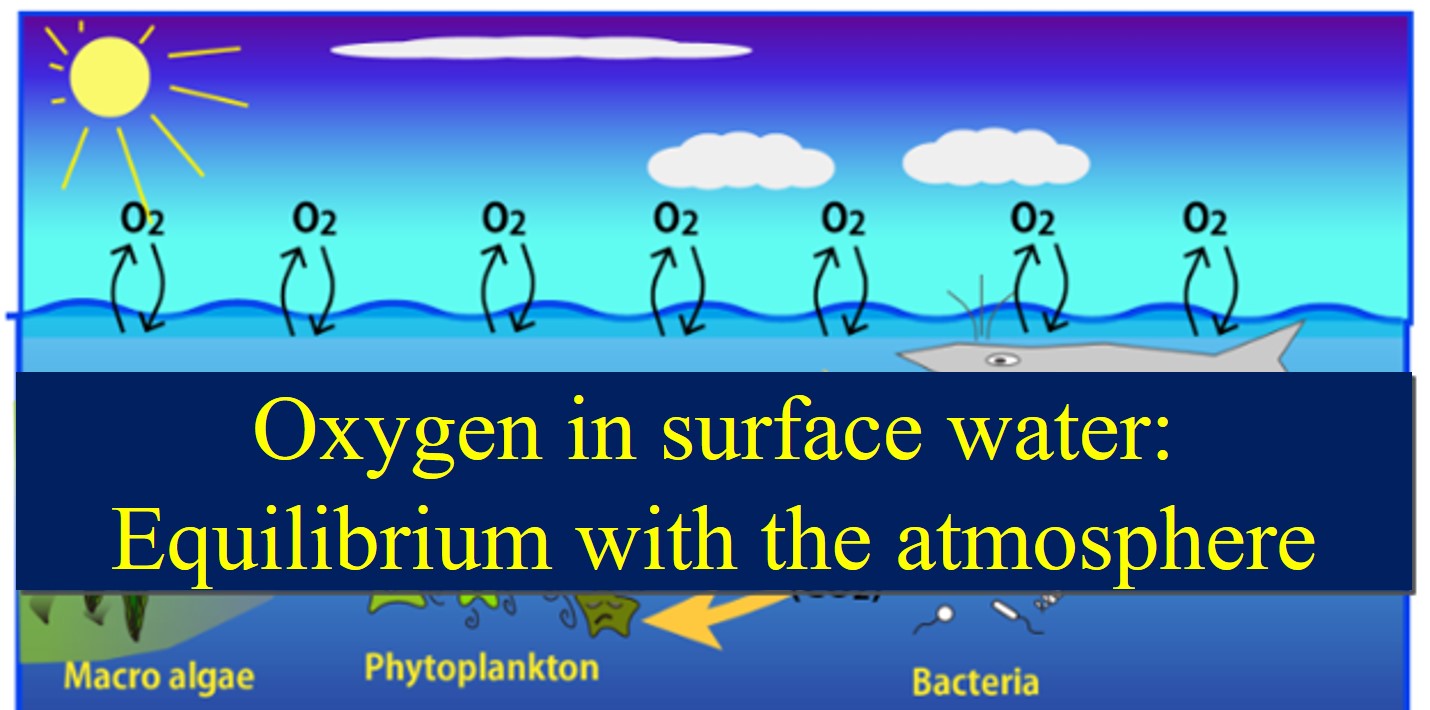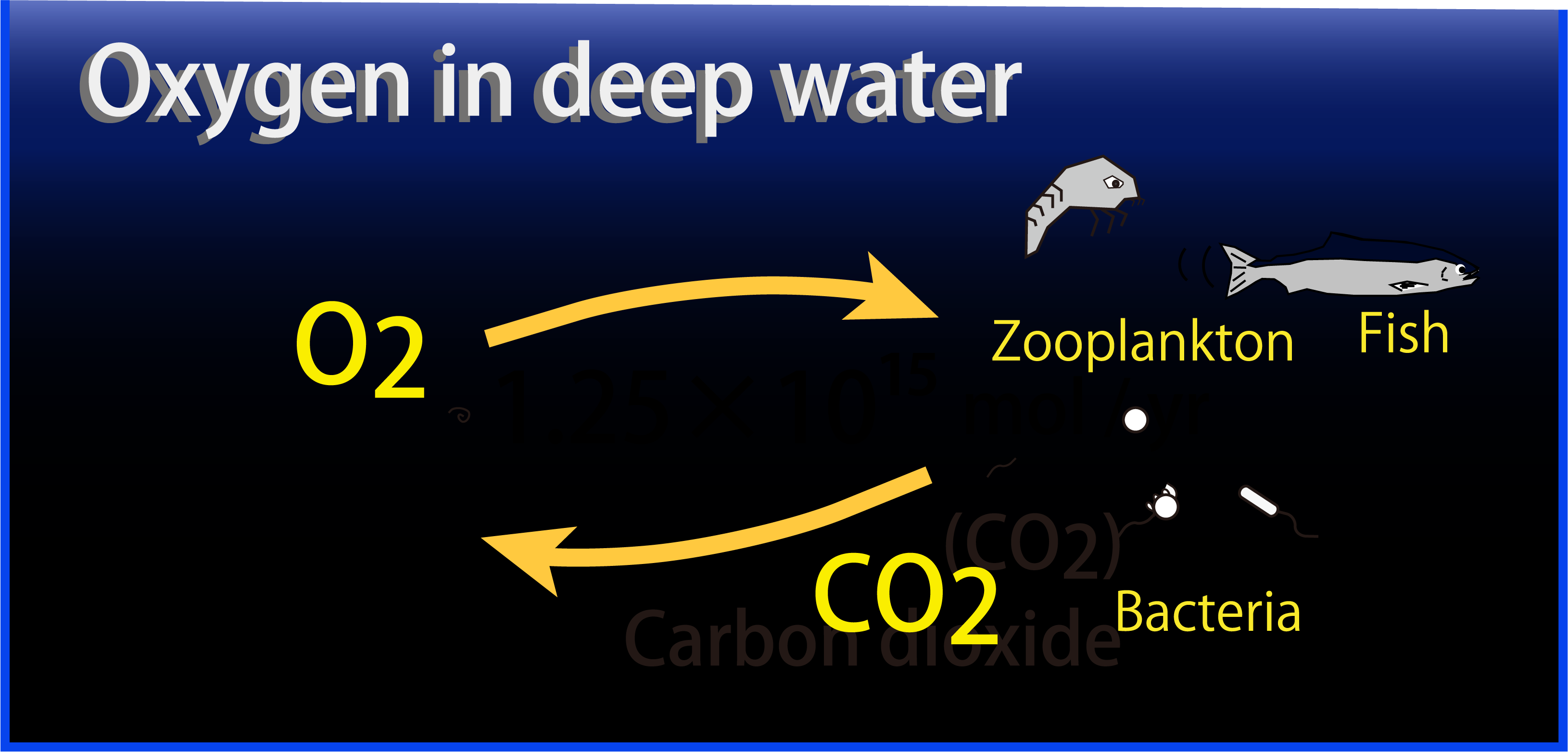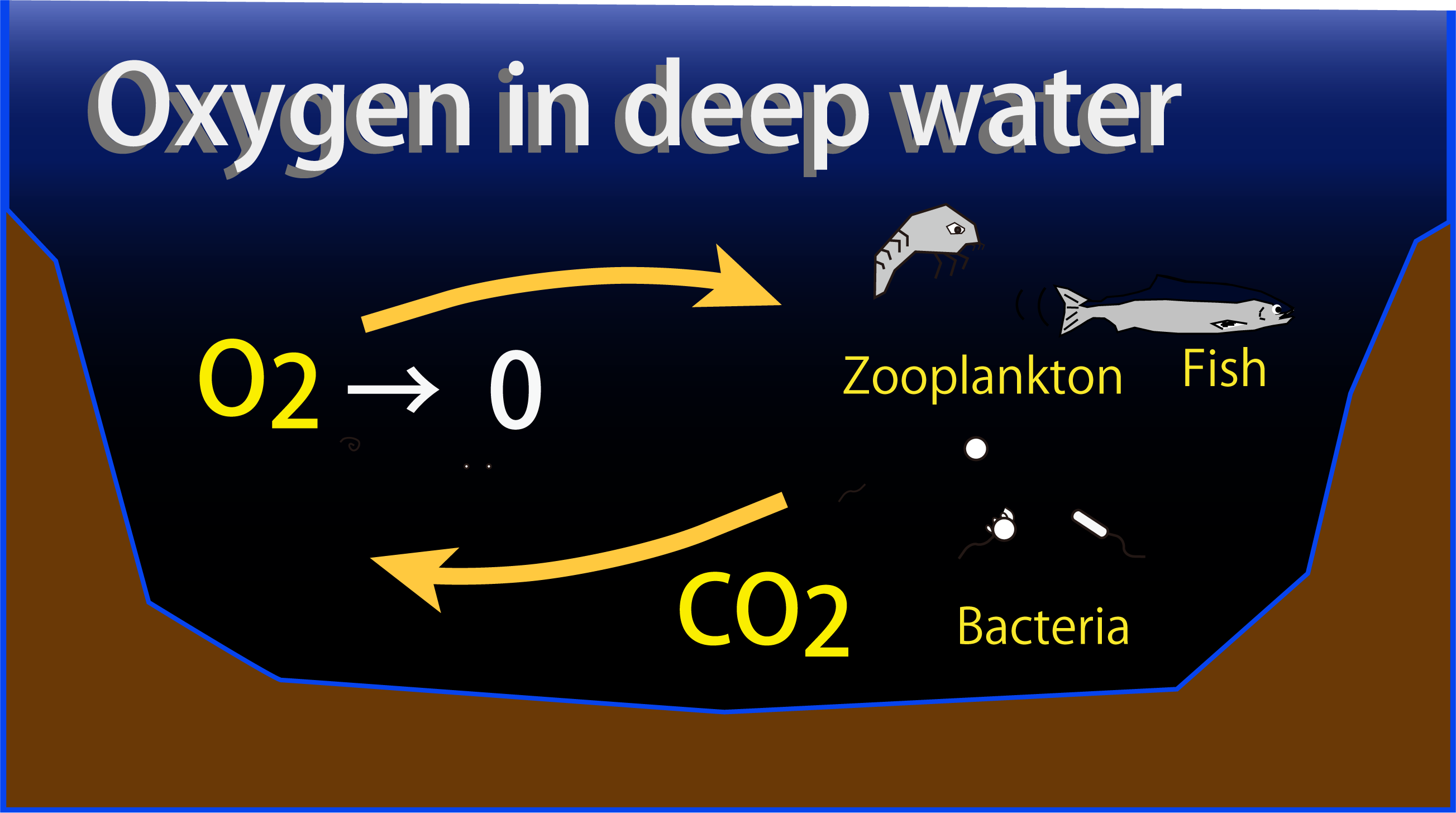Of the vast amount of carbon dioxide and water in the ocean, marine plants use a small fraction for photosynthesis to synthesize organic matter, and in exchange, they exhale molecular oxygen (O2). On the other hand, plants and animals consume oxygen and organic matter through respiration and exhale carbon dioxide and water. Note that most of the oxygen in seawater is absorbed from the atmosphere.

Photosynthesis produces oxygen only near the surface, where sunlight reaches. On the other hand, bacteria that decompose organic matter live from the surface to the deeper layers, so oxygen is consumed by respiration everywhere. The layer where oxygen production (photosynthesis) exceeds consumption (respiration) is called the photic layer.

In addition, because the ocean surface mixing layer is in contact with the atmosphere, oxygen and carbon dioxide are exchanged quickly between the atmosphere and the ocean. Therefore, the oxygen concentration in the mixing layer water is considered to be in near equilibrium with the atmosphere.

The amount of oxygen in the water in the surface mixing layer, which is in equilibrium with the atmosphere, is less than 0.3 mmol kg-1 at most, and is not as abundant as total carbon dioxide. This raises the concern that oxygen will eventually be depleted if it continues to be consumed by respiration in the middle and deep layers, which are deeper than the photic layer. In fact, oxygen is not depleted in most of the deep layers of the open ocean.

Fishery damage is often reported, including the death of benthic organisms due to anoxic conditions in the bottom layer of closed systems with a high supply of organic matter.
